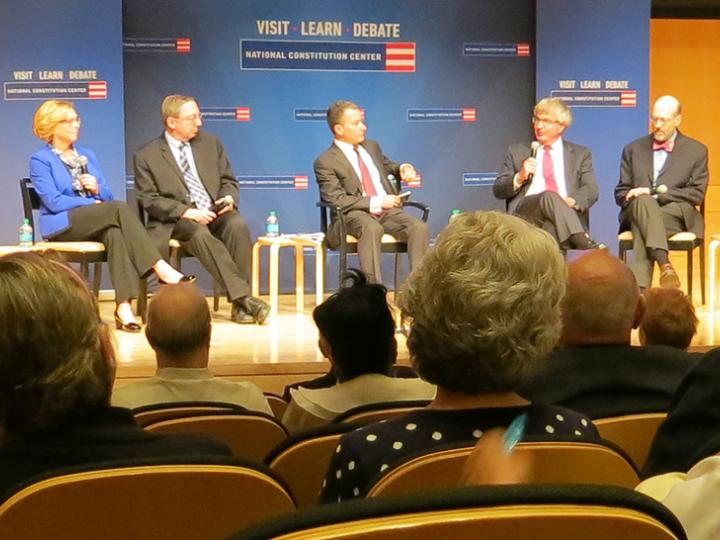As Philadelphia prepared for the World Meeting of Families and the Papal Visit, The National Constitutional Center opened its doors for a two-part panel discussing the historical origins of religious liberty in America and the contemporary debates about its meaning and impact. This discussion was part of the Center’s Religious Liberty and The Founding of America Exhibit, which will be open until January 3, 2016.
The first panel discussion included ALI’s 1st Vice President, Douglas Laycock of University of Virginia School of Law. Some of the topics addressed include: the role religious liberty played in early America; what the framers had in mind when they drafted the First Amendment; and what agreement and disagreement there is today in what they were trying to achieve.
During the panel’s discussion about the intent and function of the Establishment Clause and Free Exercise Clause of the First Amendment, Professor Laycock spoke of the popularization and misinterpretation of the phrase “separation of church and state,” noting “different Americans have used it to mean radically different things. Even the Puritans believed in separation of church and state, but they believed in institutional separation.”
In addition to Professor Laycock, the panel included Philip Hamburger of Columbia Law School, Marci Hamilton of the Cardozo School of Law, and Michael McConnell of Stanford Law School. The second panel discussed the issues and limits of religious liberty in a democratic society.
To view the discussion in its entirety, click here.
